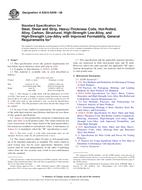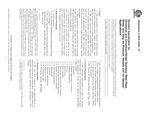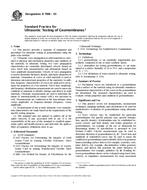Click here to purchase
This specification covers fittings, appurtenances and valves which are to be used with pipe and tubing complying with Specifications D1785, D2241, D2846/D2846M, F441/F441M or F442/F442M, or other piping as specified by the fittings manufacturer. These products, such as unions, flanges or valves, are not included in the scope of existing ASTM specifications. This specification includes minimum requirements for testing, materials, dimensions, workmanship, marking, and in-plant quality control.
1.2 Fittings or appurtenances covered by this specification are generally either molded, fabricated, or assembled from molded or machined components. The materials used in components include rigid thermoplastics, thermoplastic elastomers, elastomerics, and metals. The body or main portion of the fitting, appurtenance or valve is typically PVC, CPVC, PE or PA (nylon). All products covered by this standard are intended to be used in PVC or CPVC plastic piping systems, or as a transition from these to metal systems.
1.3 The application of these products to gas service is beyond the scope of this specification.
1.4 The products covered by this specification are intended for use with the distribution of pressurized liquids only, which are chemically compatible with the piping materials. Due to inherent hazards associated with testing components and systems with compressed air or other compressed gases some manufacturers do not allow pneumatic testing of their products. Consult with specific product/component manufacturers for their specific testing procedures prior to pneumatic testing.
Note 1 – Warning: Pressurized (compressed) air or other compressed gases contain large amounts of stored energy which present serious safety which present serious safety hazards should a system fail for any reason.
1.5 Fittings which rely on heat fusion welding for connection to the piping system are outside the scope of this specification.
1.6 Check valves (including foot valves) covered by this specification shall not be considered backflow prevention devices and shall not be used for the protection of a potable water supply. For definitions and requirements of backflow prevention devices, consult model plumbing codes and ASSE.2
1.7 Due to the complex and installation-specific concerns surrounding chemical resistance and corrosion, this specification does not address the compatibility of the products with all possible end-use environments. Additional testing specific to the end-use environment is recommended if the system is conveying liquids other than potable water.
Product Details
- Published:
- 11/01/2012
- Number of Pages:
- 7
- File Size:
- 1 file , 120 KB
- Redline File Size:
- 2 files , 190 KB


